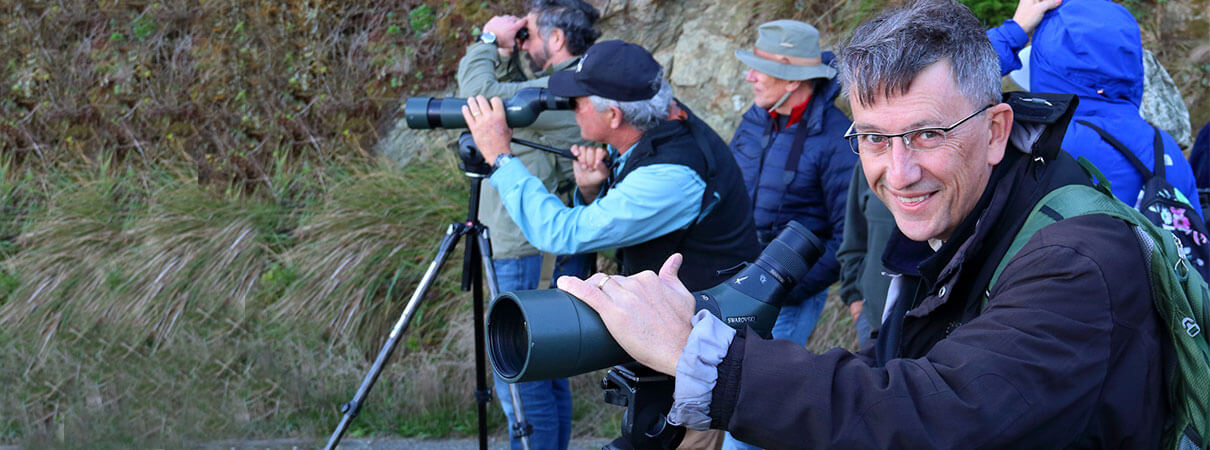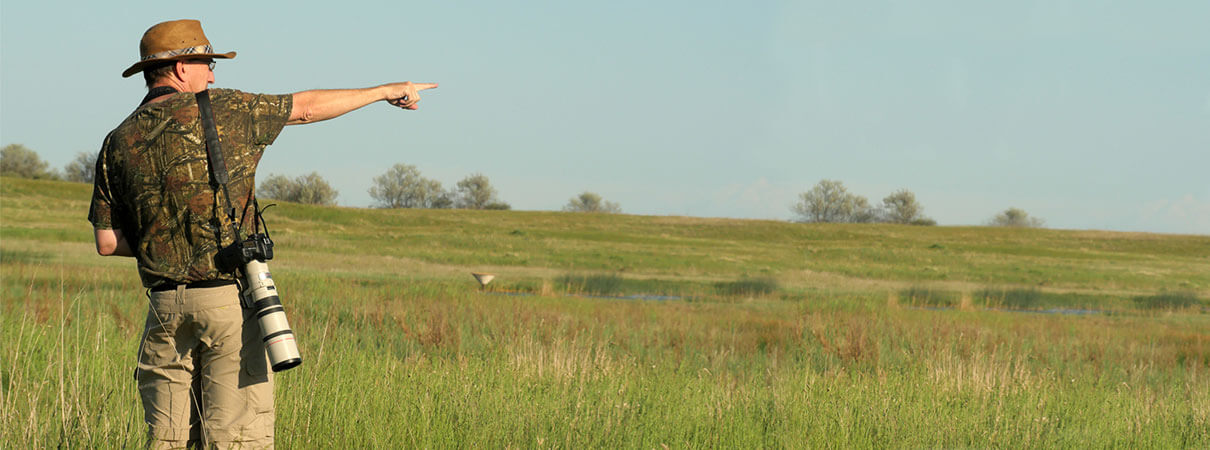3 Billion Birds Lost: Q&A with ABC President Mike Parr
A study published on September 19 in the journal Science reveals that since 1970, bird populations in the United States and Canada have declined by 29 percent, or almost 3 billion birds, suggesting that our ecosystems could be headed for serious trouble. The results show tremendous losses across diverse groups of birds and habitats. We sat down with ABC President Mike Parr, one of the coauthors, to ask his thoughts on the paper's revelations.
In your lifetime, have you observed examples of the kind of bird declines described in the paper?
On my first birding trip to North America from the UK in 1981, aged 18, I remember seeing numerous Common Nighthawks in downtown Leamington, near Point Pelee, Ontario. While I haven't been back to Pelee itself since, I have been to the nearby south shore of Lake Erie to visit the Biggest Week in American Birding, where Common Nighthawk is nowadays always a “good bird” that I go out of my way to see. Chuck-will's-widows and Whip-poor-wills have also become noticeably harder to find in recent years. Northern Bobwhite have all but vanished from this area (Maryland/Delaware/Virginia) and large Evening Grosbeak invasions seem to be a thing of the past.
Other declines are less noticeable, but that's the insidious thing about them: Who is really going to notice a gradual decline in species like the White-throated Sparrow, and over a nearly 50-year period? That's why the Breeding Bird Survey and Christmas Bird Count, which were key sources of data for the Science study, are so important. They tell us what we miss as our baselines shift.

Parr birding in California. Photo by Bruce Beehler.
What do you think are the likely drivers of the bird loss?
To me, it is clear that among the major drivers are habitat loss for grassland birds and inadequate habitat management, which has allowed fire-dependent systems to get out of balance in the West, and eastern forests to become less structurally diverse. On the wintering grounds, outright habitat loss, as we are currently seeing with Amazonian fires, is surely an important factor. Central America, where many of our birds concentrate in winter, has also lost around 50 percent of its historical forest cover.
Pesticides appear to be causing serious declines among insects, which most terrestrial birds depend on in some way, and they are likely a major driver as well. Mortality from collisions and unnatural predation by cats and other invasives play a major role in adult bird mortality. And then, of course, climate change is a wild card since we don't know precisely what it is going to do yet, but it is likely to impact all birds in some way — some possibly good, some probably disastrous.
These threats are cumulative, and we may never know the relative impact of each of them. It may also be many years before we appreciate their interplay with sufficient sophistication to isolate specific causes by species. In the meantime, we are going to have to go with the best science we have, which currently suggests that the combination of all these threats is the cause of bird declines. So we must tackle them all.
Any particular bird groups you were surprised to see in decline?
Well, I think everyone was surprised to see that introduced species such as House Sparrows and European Starlings have declined a lot. This is really the “canary in the coalmine” moment. If urban introduced birds are surviving poorly in this increasingly toxic, urbanized, fragmented, over-heated world, we've really got a problem.
To me, there's now overwhelming evidence that Earth is headed on the wrong path in terms of its future livability for nature and humans. We need a radical shift in thinking. It is up to us to impress that upon our global leaders, many of whom currently seem either uninterested or unwilling to address this greatest of all human problems. Reaching the moon was one of the greatest accomplishments of our parents' generation. Saving the Earth must be the greatest accomplishment of our generation, and our children's.
What can individuals do to help turn the tide of bird loss?
Individual action such as keeping your cat indoors, bird-proofing your windows, reducing or better still eliminating pesticide use (such as neonicotinoids) around your home, and reducing or stopping the use of single-use plastics are a few of the ways you can help.
There's also purchasing your power from renewable sources, calculating and offsetting your carbon emissions, managing your land better for birds, lending your voice to the bird conservation effort with your congressional leaders (such as with our current petition to Congress – put in Bird Crisis Action Alert when done), supporting conservation financially, encouraging children to take an interest in nature, taking a friend birding… I did every one of these things (except we don't have a cat) and it was fun and really not too costly or complicated!

Parr in North Dakota. Photo by Aditi Desai.
What kind of legislation will make the most difference?
A bill recently introduced in Congress would provide $25 billion annually to fight climate change and address biodiversity loss. That's the type of big thinking that is needed. What's really stopping us from doing something like that? It would create jobs, since almost all of that money would be recycled into stimulating the American economy, and it would also stimulate American innovation and position us as global leaders on these issues.
In the meantime, improving the regulatory and funding environment for birds and nature, and increasing subsidies for private landowners and states to help birds, would also be great steps in the right direction. Conserving American nature has always been a strong bipartisan issue, with broad support across the country. This type of legislation would be widely supported by voters, I believe.
What is a recent experience that gives you hope that the situation might turn around?
By investing in endangered species and waterfowl conservation, we have had tremendous success. Birds such as the Bald Eagle, Brown Pelican, and Peregrine Falcon have recovered fantastically well. Waterfowl numbers are also well up, following significant investment. We need the same approach for all the rest of our birds. Turning these population losses around will take individual action, and support from both the private sector and government. But if we all do our part, I can imagine a better world for birds, and for us.
Ready to act? Donate now to help combat bird loss.
 | Michael J. Parr is President of American Bird Conservancy. |


















































